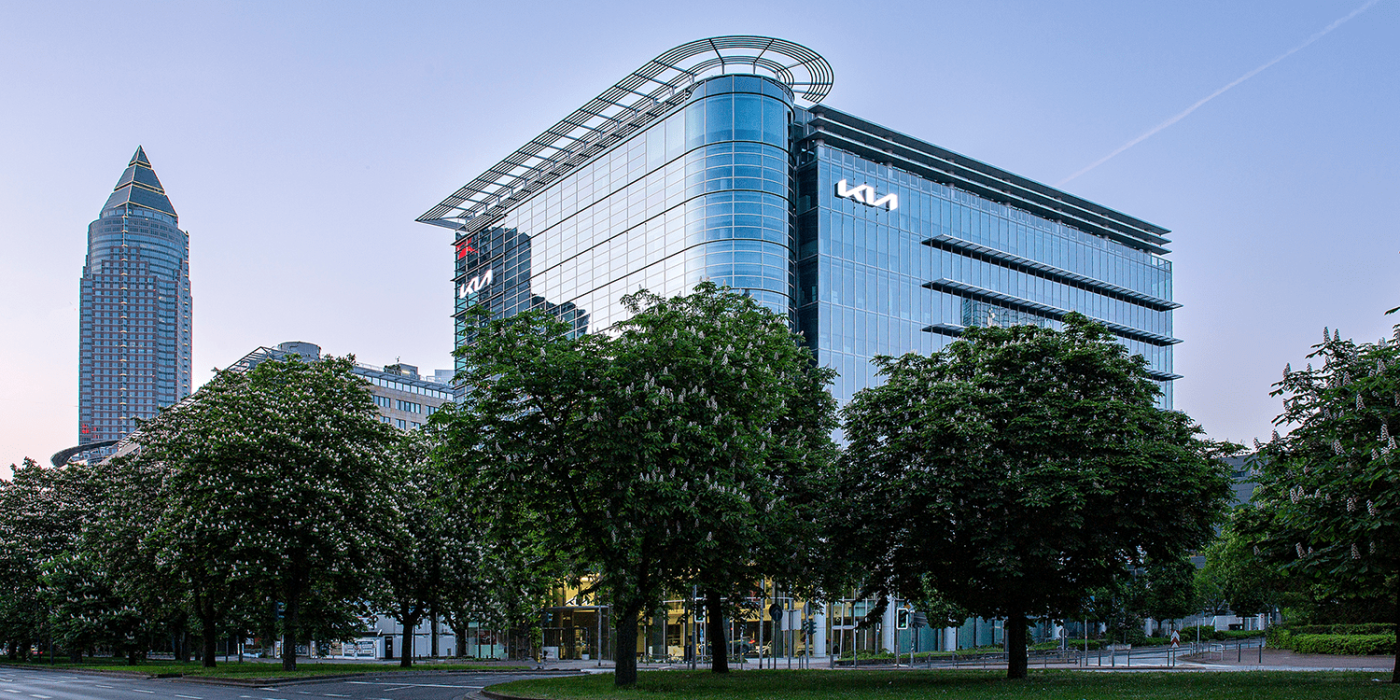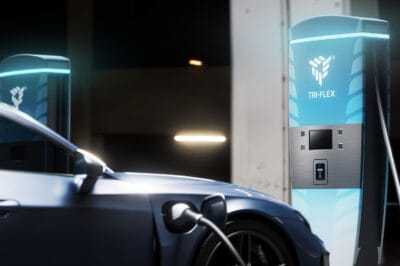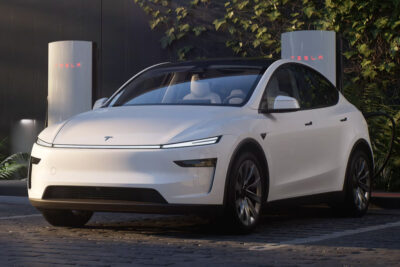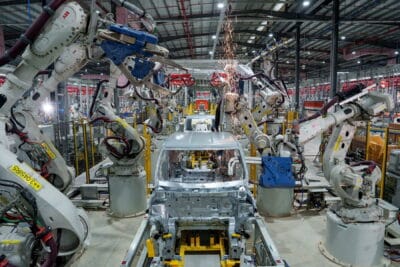Kia prepares its European headquarters for EVs
In Frankfurt, Germany, Kia’s European headquarters are being used by an increasing number of electric cars. The Korean automaker has been supported with the necessary charging infrastructure by The Mobility House, for their expertise in intelligent charging and energy solutions. The following guest article by The Mobility House shows how Kia experienced this process.
***
This year, the company fleet of Kia Europe (KEU) at its headquarters near the Frankfurt exhibition is to consist of 100 per cent electric cars. A total of around 55 electric cars, mainly the Kia Niro EV and Kia EV6 models, will be parked in the fully-glazed office building for use by visitors and employees of the car manufacturer.
As part of the Korean manufacturer’s ambitious electrification process, Kia is relying on the support of The Mobility House for its charging infrastructure. Despite several challenges that arose during the process, the development of the charging infrastructure will soon pay for itself, even without government subsidies. Discussing this process, The Mobility House conducted the following interview with Kia:
How large is Kia’s electric fleet at the FFM site at present, and what are the plans for the future?
Kia Europe (KEU): The electric fleet at our Frankfurt head office totals 55 vehicles, primarily made up of Niro and EV6 models. We aim to have a 100% electric fleet in Frankfurt by 2023.
What kind of charging points (AC or DC, preferably with power specifications and manufacturers) were there before the expansion, which charging points were added? How many charging points were added and how many are now controlled by ChargePilot?
KEU: Prior to the expansion programme there were 66 AC charging points providing up to 22kw power in the basement level of our car park. We have now upgraded the electric vehicle charging provision on the second floor with the addition of 54 new charging points. These comprise of 24 dual and 6 single wall boxes, providing up to 22kw charging. All 30 of the newly installed wall boxes are controlled by ChargePilot.
What were the most difficult points in implementing the expansion of the charging infrastructure? And what was particularly important to you?
KEU: There were several challenging elements which had to be addressed to ensure the project was a success. The main ones were managing the logistics of laying of over four kilometres of cable, conversion of the low-voltage main distribution board to support the additional power consumption, and the installation of two sub distribution boards which divide the electric power feed into subsidiary circuits.
Five measuring devices have also been installed, which allow us to assess power consumption at any given time, while a dynamic load management system ensures that the available power is being used optimally. The key outcome for us was that we were able to provide suitable EV charging to our users in a way that was easily integrated with the grid and allow for future expansion.
What other energy consumers at your site had to be specifically considered?
KEU: The project was undertaken at the car park to Kia’s European HQ, which provides a working environment for staff with over 126 parking places. It was vital that the work being carried out the car park did not interrupt the day-to-day operations of Kia Europe.
Is there any local generation of energy coupled with the system?
KEU: No.
Are there any plans for future expansions?
KEU: This upgrade will allow us to support the charging needs of our EV fleet for the near future. There are plans to supplement the infrastructure with a photovoltaic system in order to improve our CO2 balance, but we are not there yet, as there are still more studies to be done.
Who charges at the charging points? Only employees, or guests / third parties via public charging as well?
KEU: Anyone visiting our European HQ is welcome to use the charge points. Usually this consists of staff and visitors. The car park is not open to the general public.
How does the billing of the charging processes work?
KEU: ChargePilot enables us to generate a corresponding report which we can use for accounting and tax purposes.
What were the reasons for selecting The Mobility House as a partner?
KEU: We are committed to a carbon-neutral future and recognise the role that Kia must play in that, not just as an automaker but also as a responsible organisation. The Mobility House provided the best expertise and experience to support our transition to an all-electric fleet. It managed the entire process – from planning, installation and billing to operation – and helped make a complicated process very simple.
Can you provide details on costs, or when the expenses for the charging infrastructure will be amortised compared to uncontrolled charging (or compared to driving with internal-combustion engines)?
KEU: We are working to an amortization of 8 years, which practically corresponds to the normal service life of the wall boxes.
Did you receive federal, state or city funding to set up the charging infrastructure at your site?
KEU: The entire project cost around 250,000 Euro. The use of state subsidies was deliberately avoided.
* * *
The Mobility House gives us insights into interesting electrification projects in regular guest articles. The experts for charging and energy solutions from Munich have already reported on the solar power approach at ABO Wind, the conversion of the fleet of the Arbeiter-Samariter-Bund (Workers’ Samaritan Association) in the Bavarian capital, the e-fleet of the Harry-Brot wholesale bakery, one of the largest German company car charging parks at Bechtle in Neckarsulm or the fleet electrification at the Darmstadt municipal company EAD (Articles in German).





0 Comments